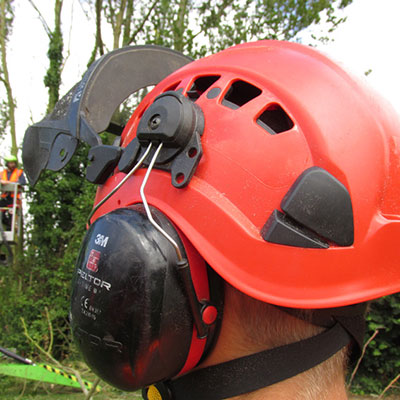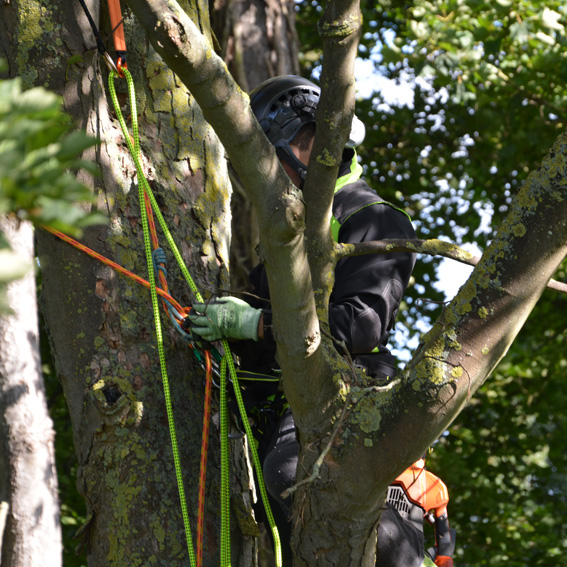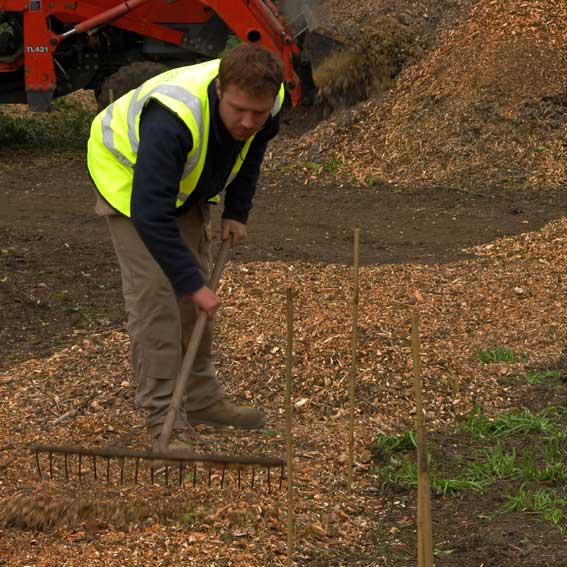
5 Health and Safety Tips for the Outdoors Workplace
Whether it’s bad weather, dangerous equipment or hazardous environments, working outdoors is likely to be distinctly more dangerous than most indoor jobs. For arborists and tree surgeons, taking all the necessary precautions and using the best certified arborist gear and equipment are essential to staying safe and preventing serious injury as well as doing a good job.
We’ve compiled five of the most important factors to think about when creating a safe outdoors working environment.
1. Personal Protective Equipment (PPE)
Appropriate protective clothing and personal protective equipment (PPE) is essential when working outdoors. PPE includes items such as safety footwear, helmets, eye protection, harnesses, and high-visibility clothing. For arborists, PPE is primarily concerned with protecting the wearer from two distinct hazards; the chainsaw, and risk of a fall from height. Both these factors make arborist work potentially highly dangerous, but with the right training and the right gear, these potential dangers can be seriously reduced.
The head is undoubtedly the most important part of your body when it comes to PPE and arborist work is no exception. A good quality helmet will not only protect from falling debris but will also help protect the head in the event of a fall. For an arborist working at height, HSE recommend a helmet with a 4 point chinstrap conforming to EN12492. Many helmets come with a mesh visor or roll-down glasses to protect the eyes from flying wood chips resulting from chainsaw work. Ear defenders are important when working with any loud machinery such as a chainsaw or wood chipper, where muffs with protection of SNR 30 or greater are often used.
Good quality gloves are advisable and the user should select the right type of glove to protect from the relevant hazard, be this cuts, bruising, thorns or chemicals. Anti-vibration gloves help absorb vibrations from heavy equipment such as mowers or hedge trimmers, something that otherwise can cause damage and discomfort over long periods of time.
2. Working from Height
It may surprise you to learn that falling from height is the number one cause of workplace deaths and major injuries. The dangers of working from height are something that tree surgeons and arborists face on a daily basis. 16% of tree work accidents reported are due to falls and 6% from uncontrolled swings resulting in collision with branches or the tree trunk.
There are several responsibilities and duties employers have to adhere to if their employees are working at height and this covers all tree work. There are additional hazards associated with tree surgery, such as falling branches, but we’ll cover that in the next section. The Work at Height Regulations 2005 cover all employer duties in detail and these include proper emergency and rescue planning, risk assessment, appropriate supervision, and work being undertaken by appropriately trained people. Another stipulation is that all employees use the appropriate equipment, something we’ve covered on a previous blog.
One of the stipulations of the Work at Height Regulations 2005 is to assess risk using ‘hierarchy of control measures’. This is a system in which the employer attempts to mitigate danger by only adopting a riskier process in the hierarchy if the current option is untenable. The hierarchy is as follows:
- Avoid working at height if possible (for example, use a polesaw from the ground)
- Prevent falls using existing architecture or safe workplaces
- Provide appropriate equipment to prevent falls (for example a mobile platform)
- Mitigate distance and consequence of a fall (through the correct use of ropes, harnesses, PPE, etc)
- Minimise consequences of a fall through training and instruction
For more details on hierarchy control measures when planning to work at height, check out the HSE guidance.

3. Aerial Tree Work
Working at height is particularly dangerous for tree surgeons and arborists. Trees can often be unstable, with weak or rotting branches. Work often involves getting high up into the canopy of the tree.
Even by following the hierarchy of control measures tree surgeons and arborists face no option than to ascend the tree and work at these heights. Doing so requires proper training, use of appropriate equipment and a full assessment of the risks involved. Every tree is different and must be judged for potential dangers on a case by case basis.
If it has been decided that a tree surgeon or arborist needs to ascend the tree to carry out work or safely take it down, then the job must be properly planned on the ground first. The climber must be aware of all the tasks involved before he begins ascending the tree. He or she must also be in contact with a member of the ground staff at all times.
Ground staff are extremely important when it comes to maintaining aerial tree worker safety. It is their responsibility to keep concentration and watch the climber at all time, maintaining effective communication with them. They must also ensure all climbing ropes and lowering ropes are free of tangles and knots and away from heavy machinery or vehicles. It is also their responsibility to control working ropes to ensure branches are brought to an assigned part of the ground safely and in a controlled fashion.
It is important that when conducting aerial work, the situation is constantly assessed by both climber and ground staff. If the situation changes and is deemed by anyone to have become riskier, then a full assessment of these risks should be undertaken before continuing. If this is uncertain then the operation should be stopped immediately.
4. Working with Chainsaws
Tree surgeons and arborists will not only be working at height but they will also be using chainsaws, which, whilst often being essential to the job, are also extremely dangerous if used without the proper training. This danger is increased by the fact that they are being operated at height. A full breakdown of injuries and fatalities from 2002-2011, in both forestry work and arboriculture work, can be found on the HSE website.
It is a legal requirement for chainsaw operators to receive the right training before operating a chainsaw and to wear the appropriate protective clothing, including chainsaw helmets, chainsaw boots, chainsaw trousers, chainsaw gloves and safety glasses or goggles. Staff must also be fit to operate the machinery. Conditions affecting mobility (arthritis), alertness (diabetes, drug/alcohol dependency), physical strength (heart conditions), vision, dexterity, grip or balance should be stated and assessed for risk. All chainsaw operators must inform their employers if they are taking prescribed medicine, which may affect any of these functions.
It is the responsibility of employers to conduct risk assessments of all operations involving chainsaws and communicate with all staff using chainsaws on site to understand any concerns or issues they might have. New workers must also be supervised and properly inducted before operating a chainsaw.
For a detailed look at all the risks involved in chainsaw work, and how to minimise them, check out the HSE’s information sheet.

5. Visibility
Workers must be able to see what they are doing, and see each other. Natural light is preferable but where this is not practicable, artificial lighting is essential to maintain safe working conditions. If the lighting source is unstable, then there must be another means of providing lighting that has its own independent power. The appropriate PPE in the form of high visibility clothing must be issued for working on highways, railways, poor light or adverse weather conditions.
